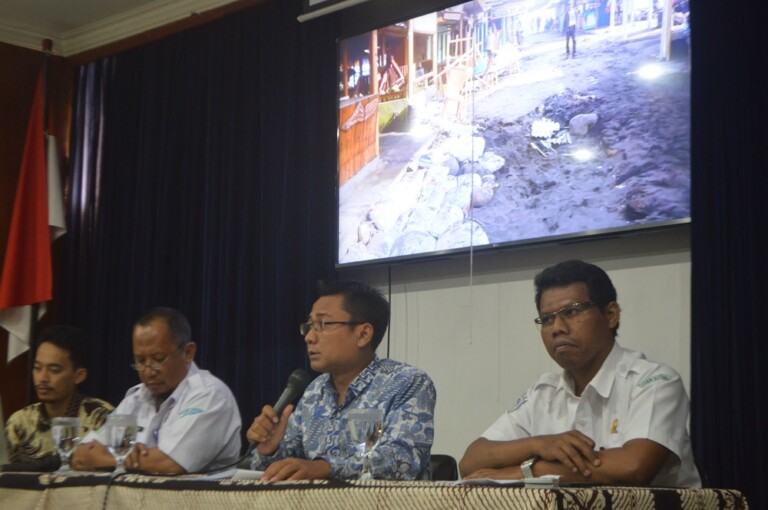
High tides are happening in the south coast of Yogyakarta. Not a few buildings and public facilities on the coastlines have been damaged by the waves.
“The high tides that struck the south coast areas of Yogyakarta have caused a significant damage and economic losses worth Rp2 billion,” said Dean of Faculty of Geography UGM, Prof. Dr. rer.nat. Muh Aris Marfai, S.Si., M.Sc., on Tuesday (24/7) in a press conference to discuss the effect of high tides in Yogyakarta. Representatives from Yogyakarta Meteorology and Geophysics Agency (BMKG) were also attending the event.
Aris revealed their field observation of a number of beaches in Kulon Progo, Bantul, and Gunungkidul. The high tides turned out be not only damaging the public facilities, but also vegetation such as that in the beaches of Goa Cemara, Pantai Baru, and Trisik.
Aris said the damage affecting the beach is different which is based on the type of coastlines. Beaches fronting the sea with not-steep coasts will experience bigger waves unlike cliff beaches or ones that have platforms, bays, lagoons, and mangrove beach that can stand the wave. With the characteristics of beach that front onto the sea, Aris said, Yogyakarta beaches will potentially always receive high waves.
“High tides can bring significant damage to the coastlines so the people living there are expected not to do activities intensively on the beachfront,” he said.
Coastline buildings and public facilities are not expected, either, but at a minimum of 100 meters behind the coastlines.
The people are advised to always monitor the BMKG related to the high tide activities. Meanwhile, long term mitigation can be done by complying with coastal spatial regulations and reviewing old spatial regulations based on climate change and disaster risk reduction.
Meanwhile, representatives from BMKG Yogyakarta, Sigit Hadi Prakosa S.P., M.Si., said the high tides in the south coasts of Yogyakarta occurred due to the significant difference in air pressures in the southern hemisphere and northern hemisphere, in addition to tropical cyclone and ampil cyclone. He predicted that the high tides would happen until end of July and the tide would reach 5-6 meters at its highest.
Head of Data and Information of the BMKG Yogyakarta, Teguh Prasetyo, S.Si., further warned people to always be alerted and see updates from BMKG related to the high tides activities.
“We will continue to update information on high tides in the BMKG website and social media. Society is expected to always follow the latest information through the social media,” he said. Meanwhile, the agency plans to train the people living near the coastlines to raise their awareness on sea weather.

